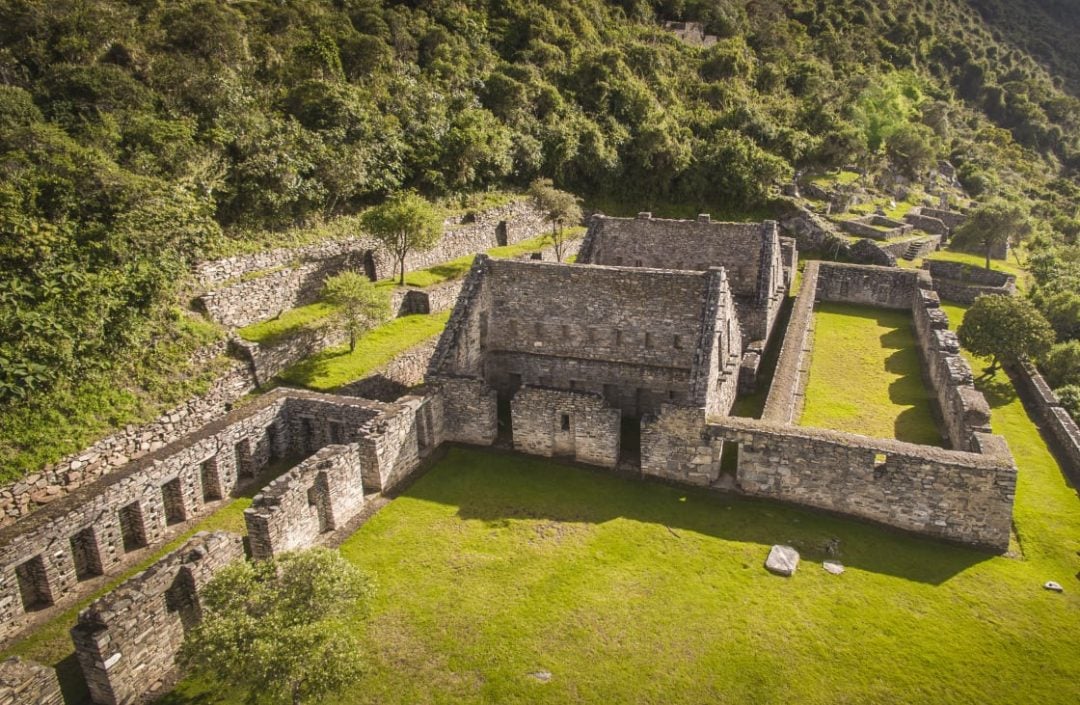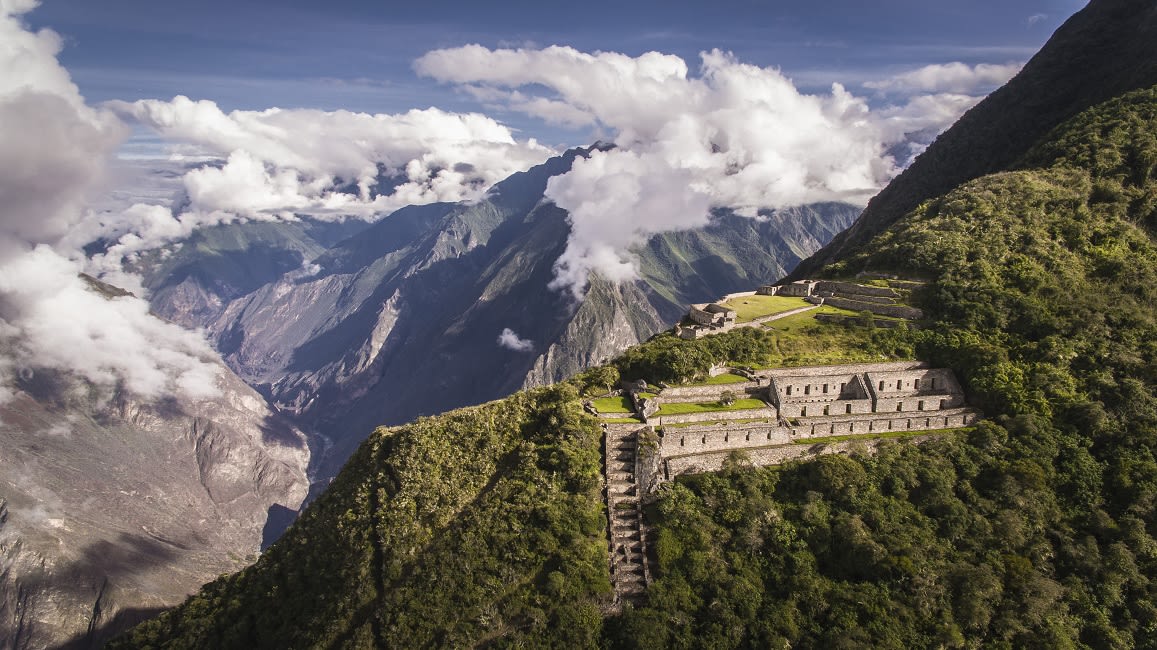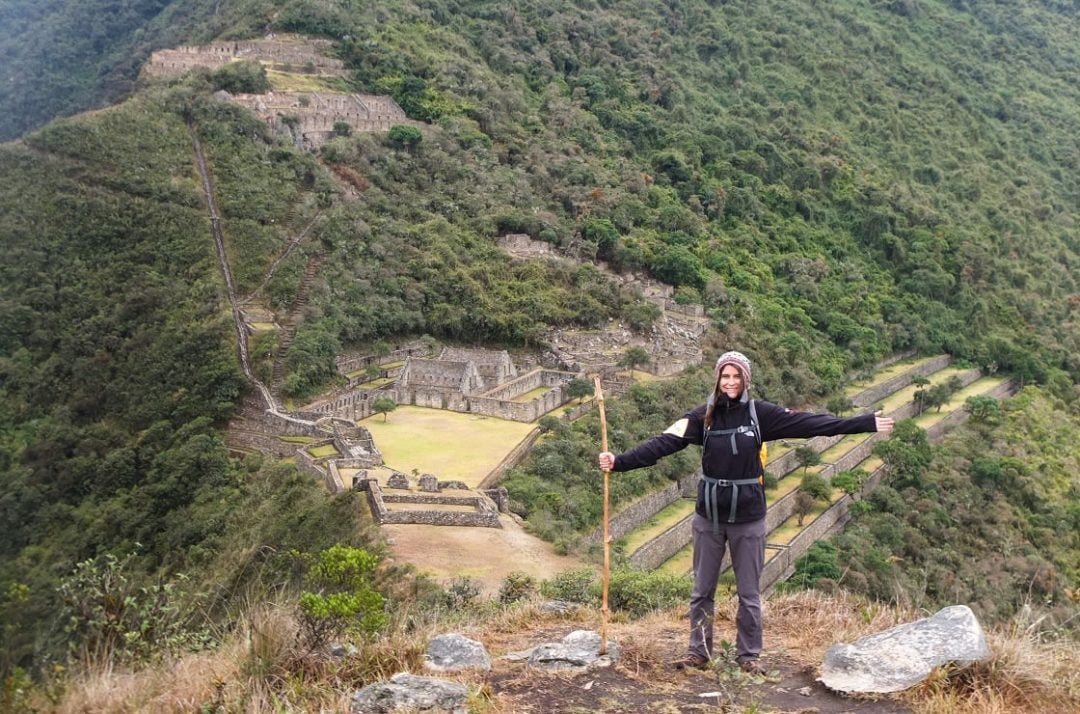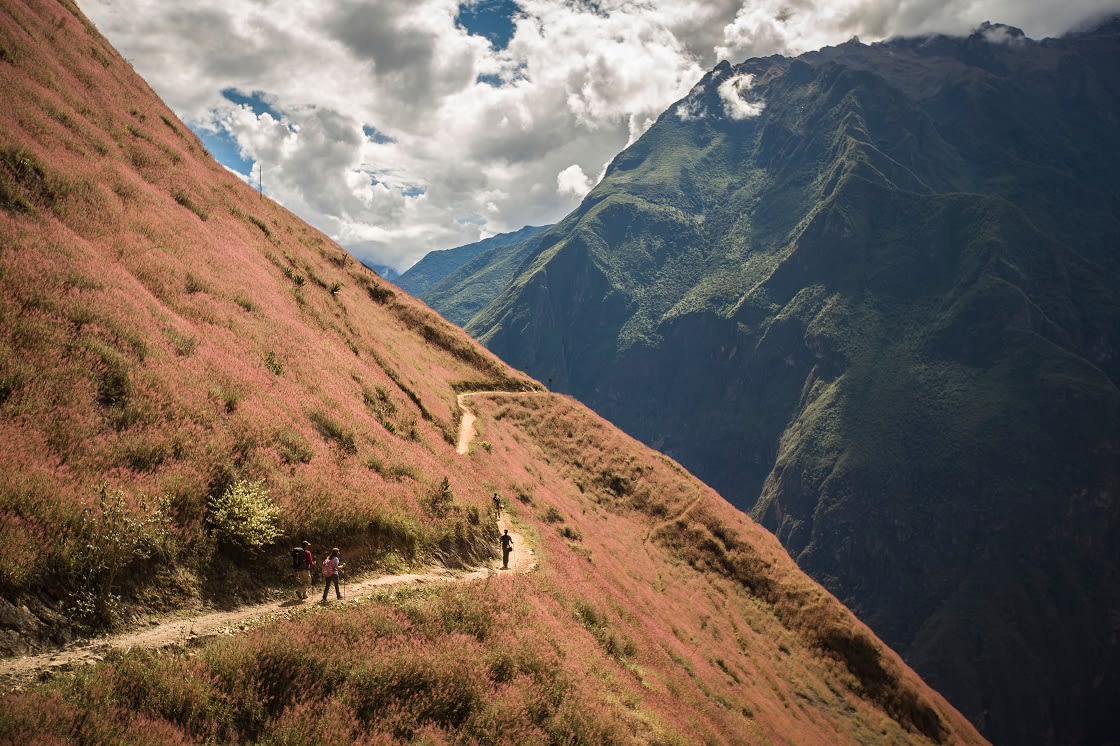Choquequirao: Peru’s Secret Cradle of Gold

Ever found yourself cursing other tourists? Wishing for a photo album not populated by posing strangers? Dreaming of a meaningful experience not shared by crowds of other travelers? There seem to be scant places on the planet these days that aren’t thronging with tourists, but Choquequirao is one of them. Unbelievably, this ancient Incan site only receives a handful of visitors each day. Those daring enough to make the trip are rewarded mightily with a one-on-one experience of a spectacular lost city.
Choquequirao means ‘Cradle of Gold’ in the local language of Quechua. As more and more of this extraordinary set of ruins emerges from beneath the jungle, it’s not hard to see where the name comes from. Built into a leveled section of the mountainside and ringed with stones, ancient plazas and crumbling living quarters nestle into the flank of a magical forested valley. This stunning sight is all the more enchanting when dusted with a blanket of misty cloud, curling its wispy fingers through the Apurimac canyon. Look closely and you might spot a sacred Andean condor soaring below. Read on for the low-down on one of the most challenging but extraordinary archaeological sites on earth.

Where Is Choquequirao?
Choquequirao, Peru is often dubbed the ‘little sister of Machu Picchu’. It is the remote and inaccessible ruins of an Incan city built in the same era as South America’s most famous citadel. It has a similar structure and architecture, but is astonishingly overlooked in comparison. Tucked into the Sacred Valley of the Incas, high on the Quriwayrachina Mountain Range of Peru’s Cusco region, the Choquequirao archaeological site is currently only accessible via a challenging several-day hike. But with rewarding views across the valley of the Apurimac River, surrounded by verdant jungle and the snow-capped peaks of the Peruvian Andes, it’s a trek that will not be easily surpassed for beauty.
The site itself covers somewhere between 6 and 18 square kilometers and is overflowing with ruined buildings and stone terraces created many centuries ago. Incredibly, roughly only one third of these inca ruins has been properly excavated. Archaeologists speculate that the area could be up to three times the size of the better-known Machu Picchu site!

Hiker Celebrating Arrival At Choquequirao Ruins
What’s Next For Choquequirao?
While Machu Picchu receives up to 2,500 tourists each day, Choquequirao only attracts about a dozen, making it a pristine oasis unspoiled by the modern world. However, the opportunity to make the most of this undiscovered gem might not last forever. The Peruvian government is in the midst of plans to build a cable car to Choquequirao that will alter this experience forever. The $50 million cable car will make it possible for visitors to cross the Apurímac River and reach the archaeological site in just 15 minutes. This will mean an estimated intake of 3000 visitors per day, swamping the site in crowds of people, changing life for the locals in the villages forever.
Choquequirao History
One of the most thrilling aspects of Choquequirao is that there is still so much yet to be discovered. But while so much still lies hidden under the jungle, there are few things that we do already know about this forest-clad metropolis. It is believed to have been built in the 15th century by the Incan Emperor Pachacuti Inca Yupanqui, and remodeled and extended by his son, Tupac Inca Yupanqui. But what role did this Incan structure actually have in the lives of the ‘sons of the sun’?
Well, one theory is that it could have served as the administrative center and formed a vital link between the Amazon rainforest and the nearby city of Cusco (just 98km to the East). Alternatively, it could possibly have been part of the Emperor’s royal estate. Other historians believe – rather excitingly – that it may have been the last remaining outpost of the Inca as they fled the Spanish Conquistadors. A refuge and a stronghold during the 30-year uprising of the 16th century, and gateway to Incan capital Vilcabamba.
After its abandonment in the mid 1500s, Choquequirao has lain largely untouched for centuries. It was ‘rediscovered’ at various points over the past 300 years, including a cursory exploration by the famous Hiram Bingham before he went on to unearth Machu Picchu. Excavations and preservations did not commence however until the 1970s, and it was not until 1992 that a serious archaeological project was begun.
Layout and Architecture
The urban sprawl of the citadel is split into 12 sectors, and archaeologists have identified differences in the buildings and what their functions may have been. One sector contains the main plaza which would have been the ceremonial center of the city. Another features long warehouses called ‘kallankas’ that would have been the priests’ quarters. Other sectors are dedicated to the cultivation of crops, or to the all-important irrigation system and main waterway, and some to the general living quarters of the common people.
Much of this is tricky to explore today as it still belongs to primeval vegetation – paths are overgrown and difficult to navigate. However, you can easily have a look around the temple and buildings surrounding the main square. Some of the most iconic structural features are the large stepped terraces decorated with shapes of llamas in lighter-colored rock. Other terraces feature different animal shapes such as the guinea pig! Further evidence of the remarkable masonry practiced by the Incas.
There’s much to suggest that this site would have held a high status in the Inca Empire. The highly sophisticated architecture and irrigation channels, shrines and temples imply that it would have accommodated nobility. There are also theories among modern archaeologists that Choquequirao is aligned geo-cosmically with Machu Picchu, and the path of the stars themselves.

On The Road To Choquequirao, Cusco – Peru
How To Get To Choquequirao
It’s safe to say that a visit to Choquequirao is not for the fainthearted! To reach the mountainside ruins you have to undertake a hefty hike involving a 1,500 meter descent down the valley and then a climb of 1,800 meters up again. There are three main trail options – from Cachora, Huanipaca or Yanama. The latter two are particularly steep, and so the most popular and well-maintained path is from the village of Cachora just outside the Apurimac Valley. This is accessible from Cusco by bus or taxi.

Camping At Chiquisca, On The Way To Choquequirao
The Choquequirao trek from Cachora has more amenities. There’s the official campsite Playa Rosalina with showers, toilets and sources of drinkable water, or the further-on Santa Rosa. It can be done by foot, but many choose to hire a mule or horse and travel guide, from any of the shops of the main Plaza del Armas in Cachora.
It’s a 3 or 4 day trek with wild camping, and one of the most difficult in Peru. Rock-slides are common in the rainy season, and it’s widely acknowledged to be twice as difficult as the Inca Trail to Machu Picchu. The best time for hiking to Choquequirao is during the dry season (from May to September). Although it’s the most popular time of year, the trail still remains uncrowded. Hard-core adventurers can continue on to Santa Teresa (La Convención) or Machu Picchu. If this is your plan, make sure to bring enough food and consider hiring a mule.
It’s worth spending a couple of days in Cusco beforehand to get accustomed to the altitude. You don’t want altitude sickness to kick in during the hike. Days are hot in the sun, and the nights are cold. Insect repellent is an absolute essential as the biting bugs are particularly voracious! There is an entrance fee to the archaeological park of around $16, and these can be purchased upon entry.
